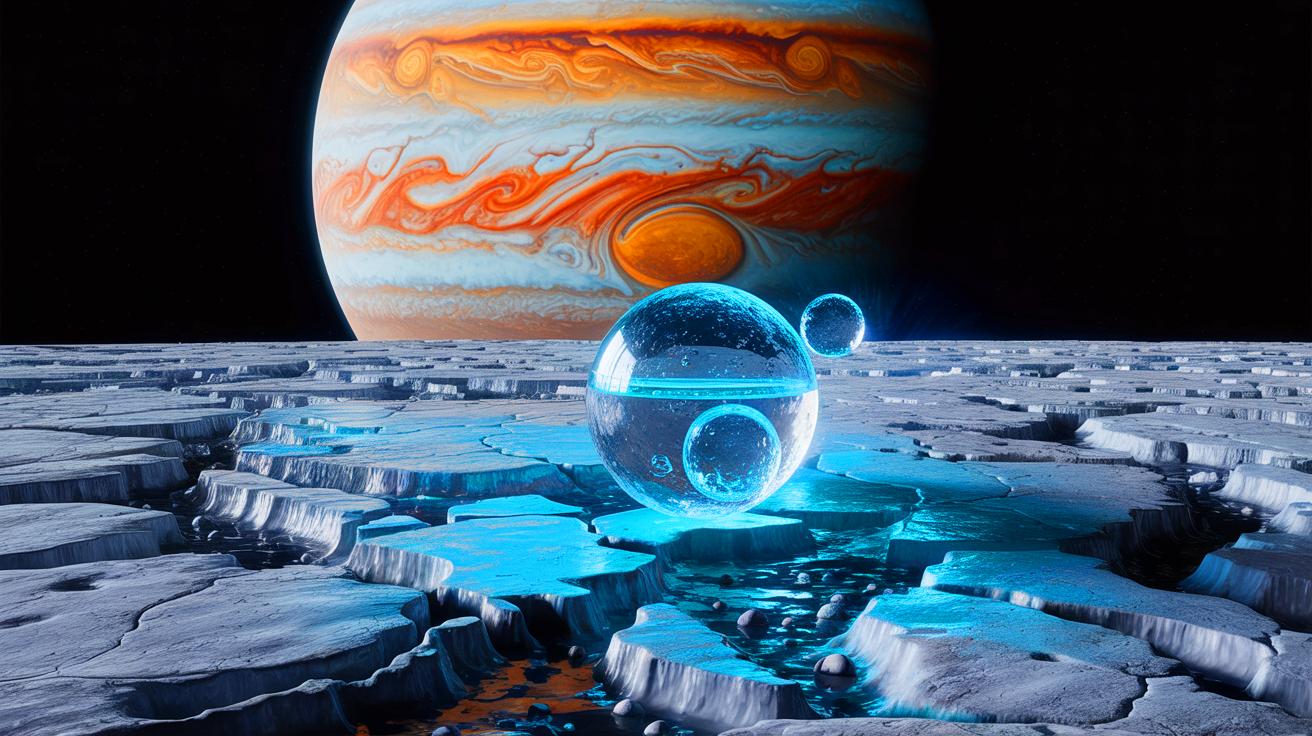Unveiling Europa's Hydrogen Peroxide Mystery: Clues to Alien Oceans
Key Ideas
- SWRI scientists simulated Europa's conditions, discovering the role of carbon dioxide in elevated hydrogen peroxide levels, aligning with JWST observations.
- The findings suggest potential subsurface oceans on Europa that could support extremophiles, hinting at the moon's habitability for life forms.
- Research implications extend to broader understanding of icy bodies in the solar system, highlighting the significance of carbon dioxide in chemical processes.
- These experiments offer insights into Europa's chemistry, aligning with upcoming NASA Europa Clipper mission to further explore the moon's habitability.
Jupiter's moon Europa has intrigued scientists with its potential for life, especially after the James Webb Space Telescope detected high hydrogen peroxide levels on its surface. Southwest Research Institute (SWRI) conducted experiments simulating Europa's conditions. By irradiating a mixture of water ice and carbon dioxide in a vacuum chamber, they discovered elevated hydrogen peroxide levels, explaining the moon's chemistry. This finding suggests possible subsurface oceans on Europa that might sustain extremophiles. The research aligns with NASA's Europa Clipper mission, aiming to probe Europa's habitability further. The study's implications go beyond Europa, shedding light on similar processes in the solar system and the potential for life on other icy bodies. By understanding the role of carbon dioxide in chemical processes, the study opens avenues for exploring Ganymede, Enceladus, and more. Dr. Ben Teolis underscores the importance of chemical energy in sustaining life in dark environments. These findings set the stage for upcoming missions, offering a glimpse into Europa's intriguing chemistry and its potential for supporting life.
Topics
Power
Space Exploration
Scientific Research
Planetary Science
Astrobiology
Chemical Processes
Jupiter's Moon Europa
NASA Mission
Potential For Life
Latest News
